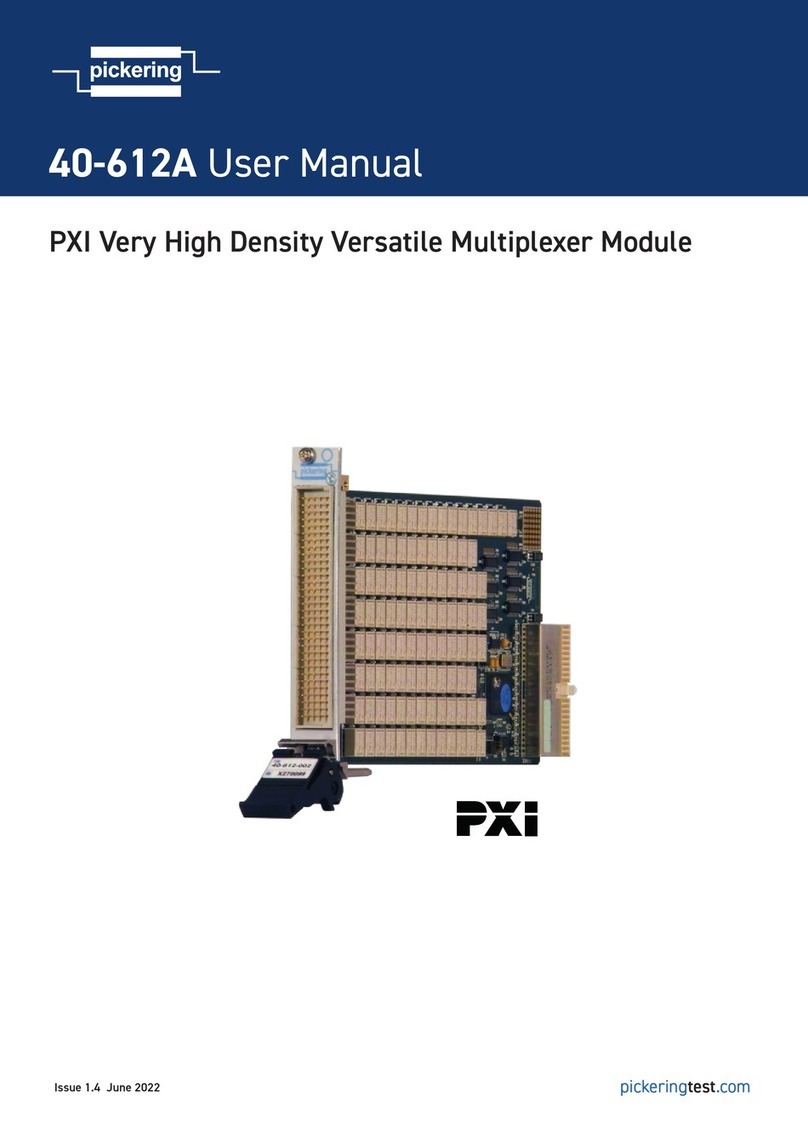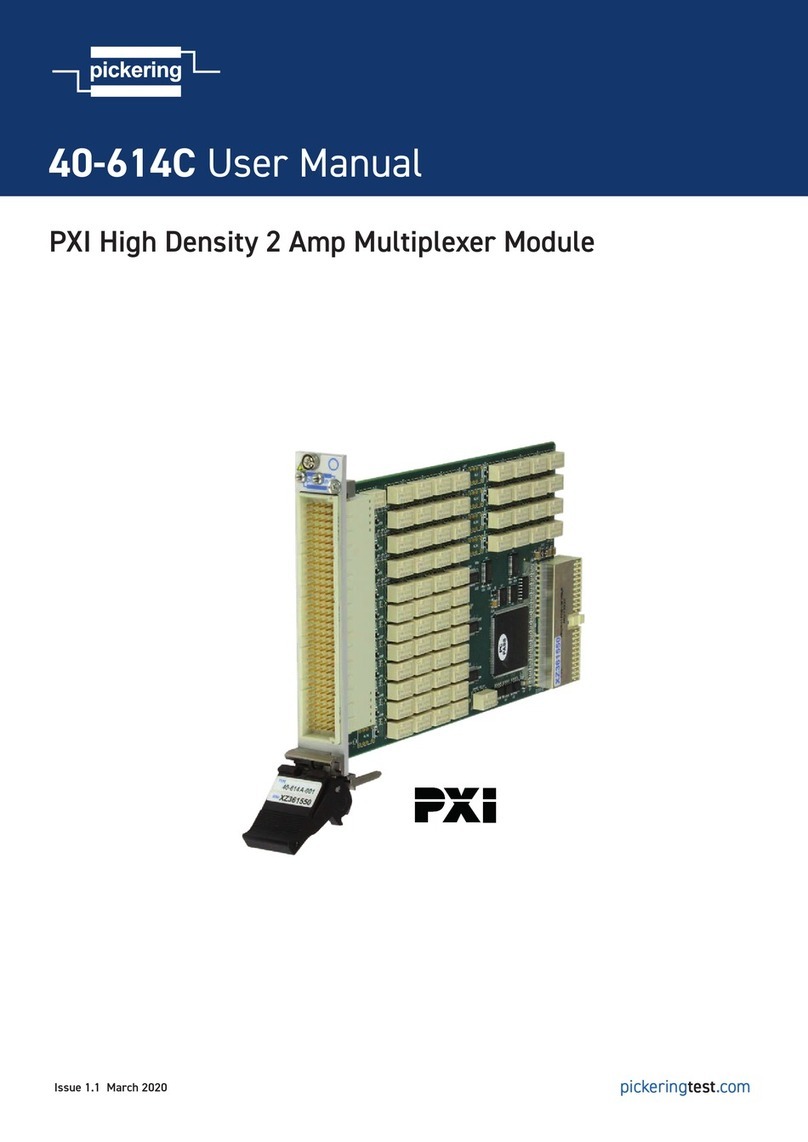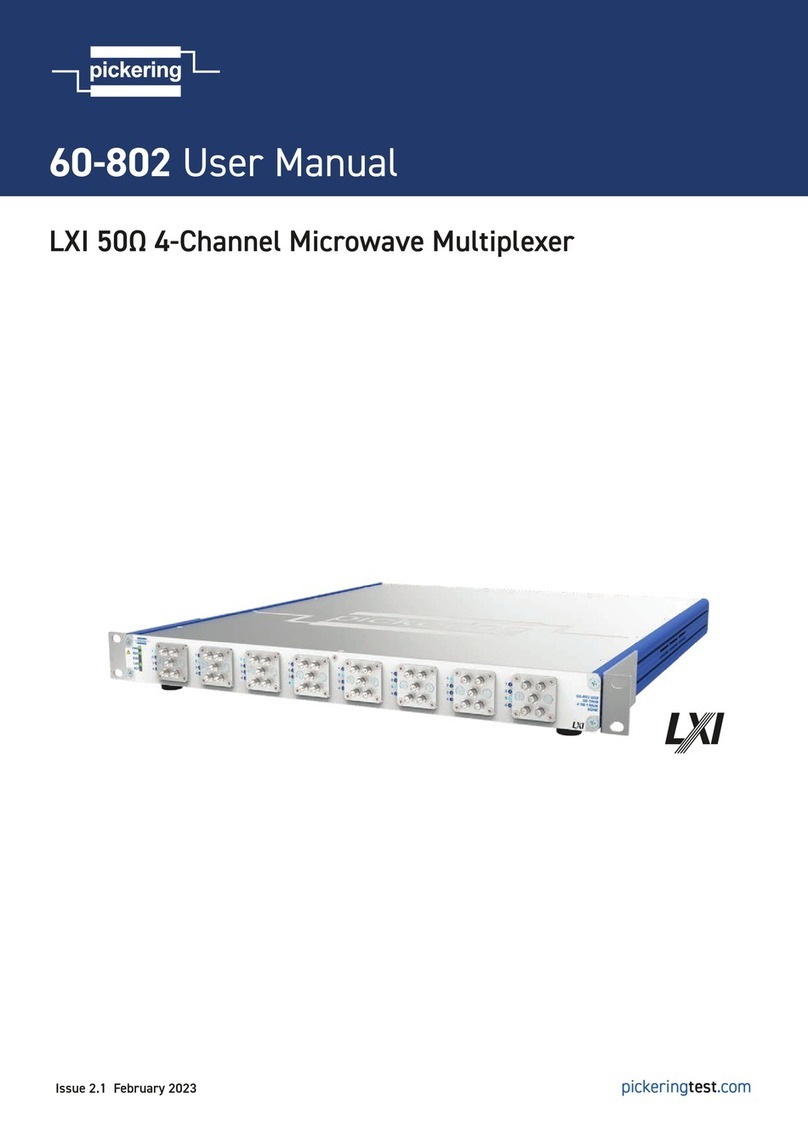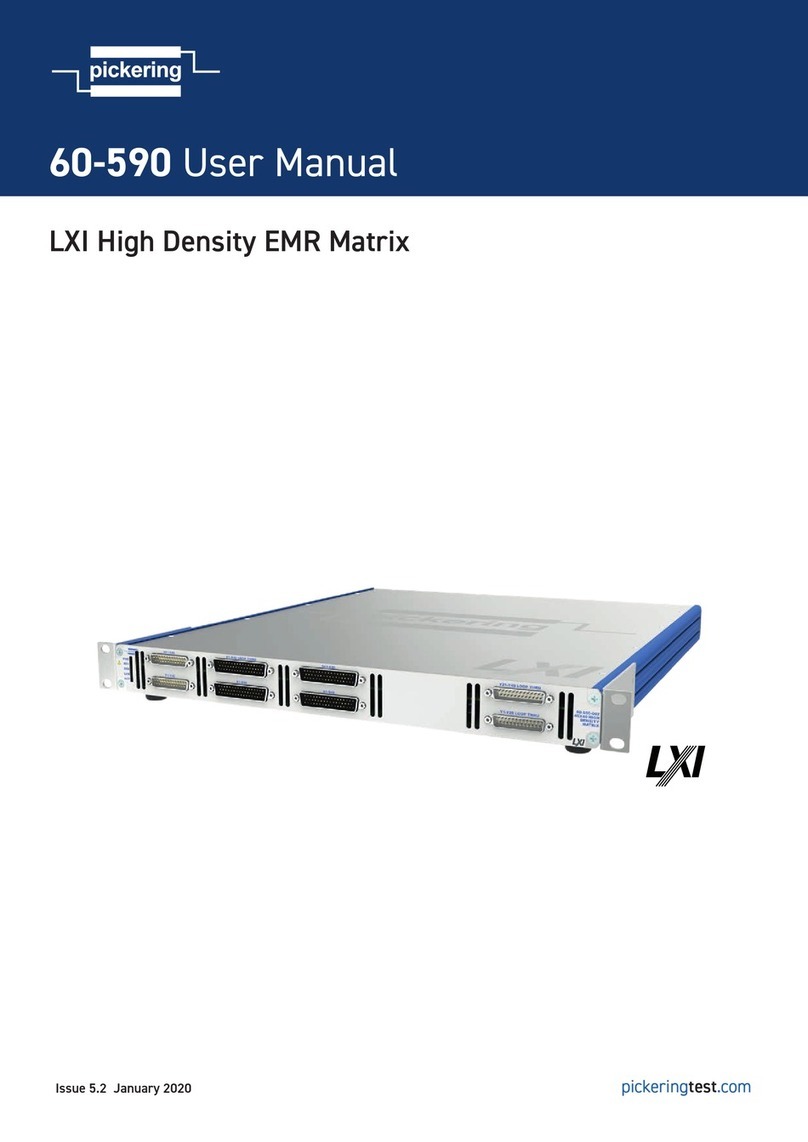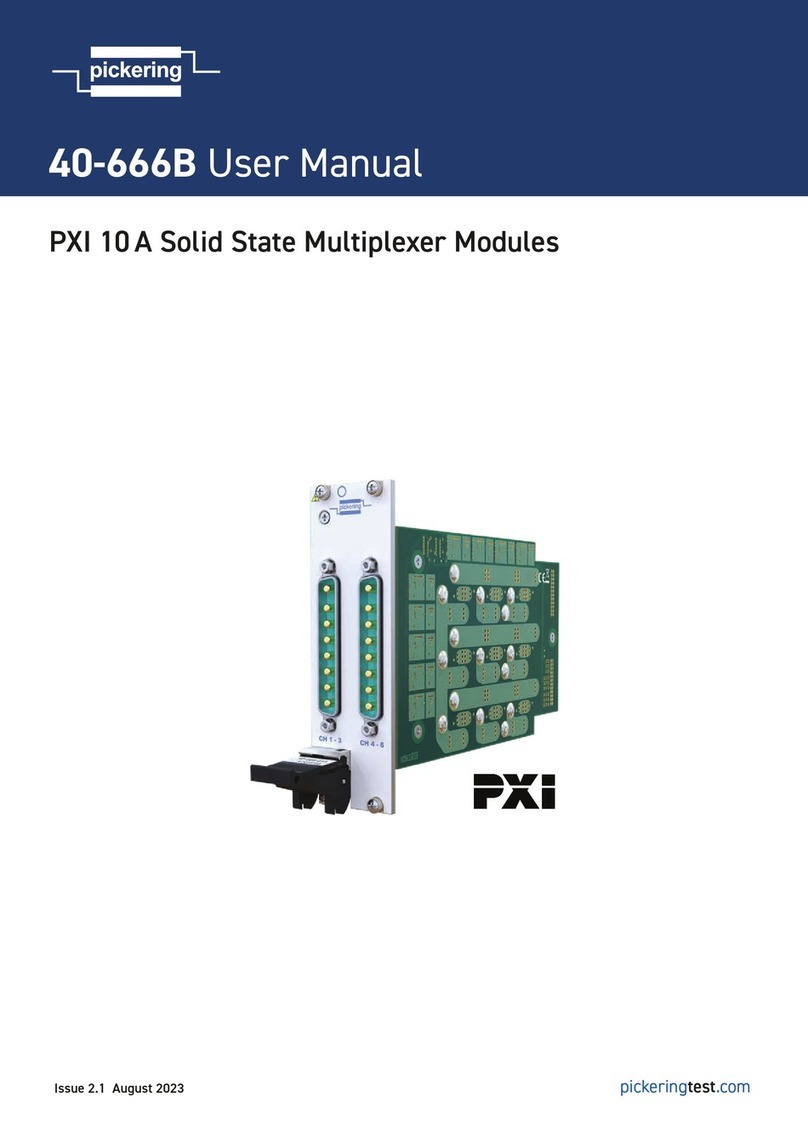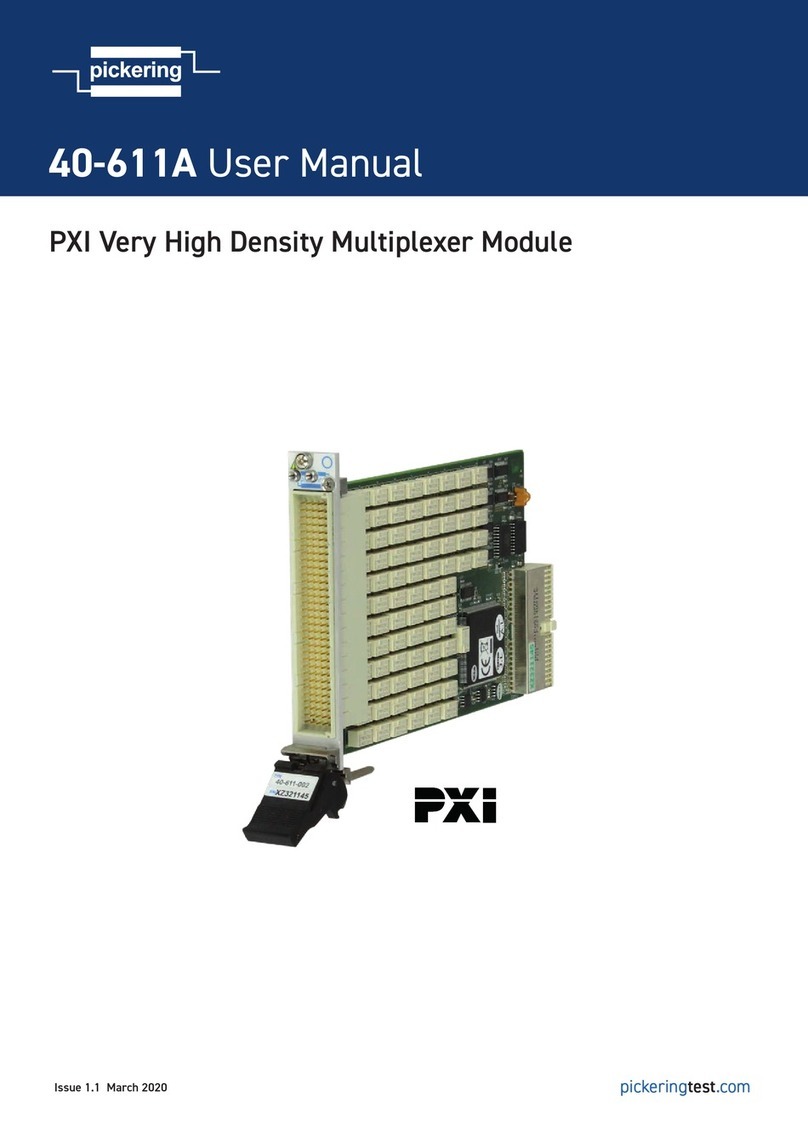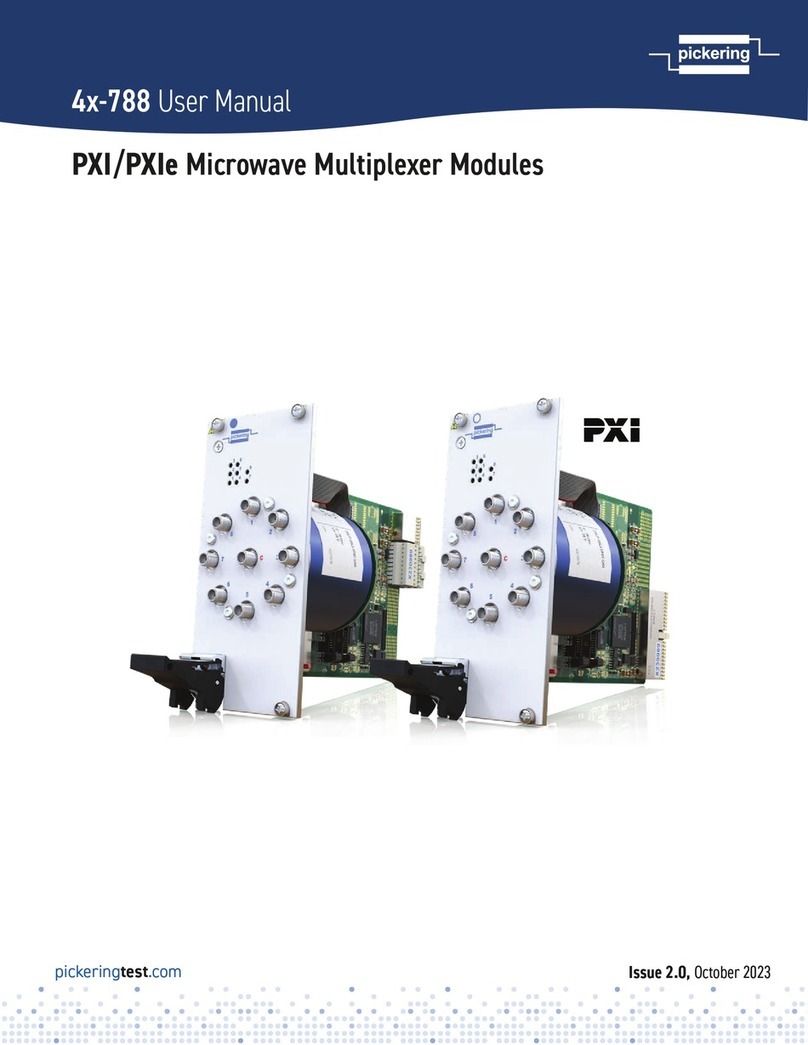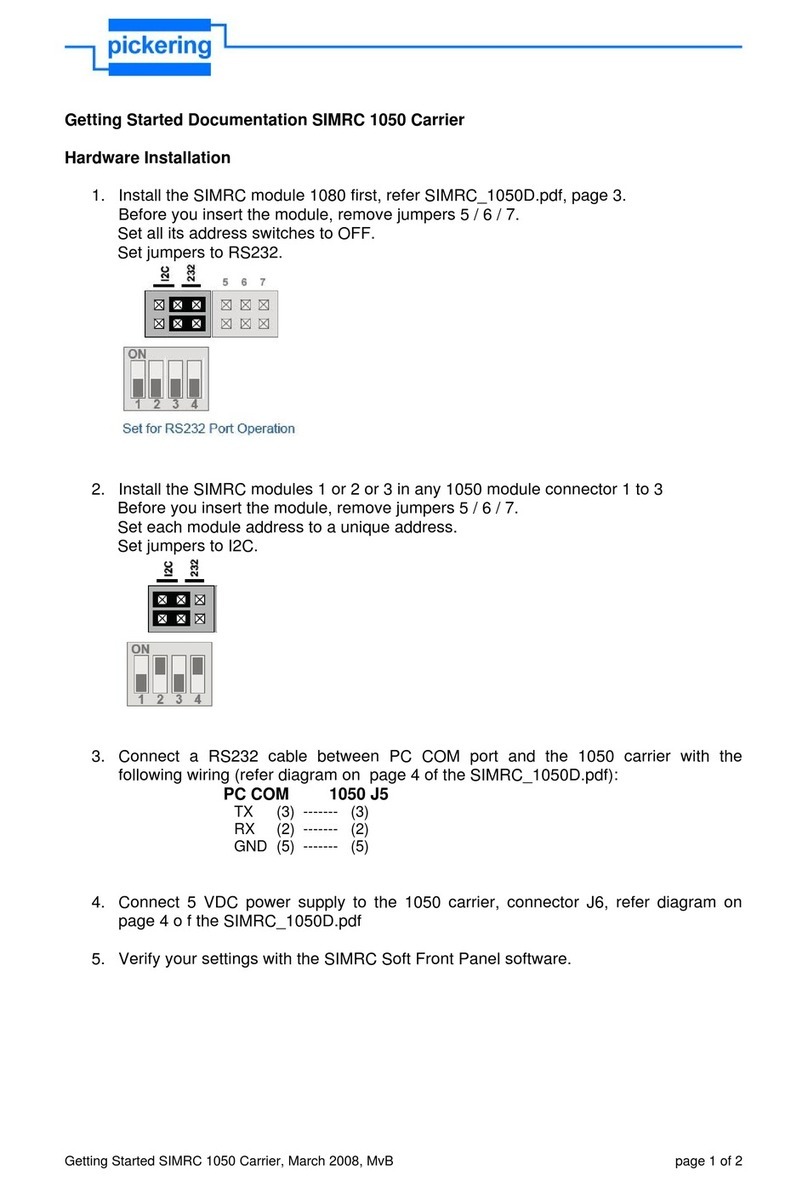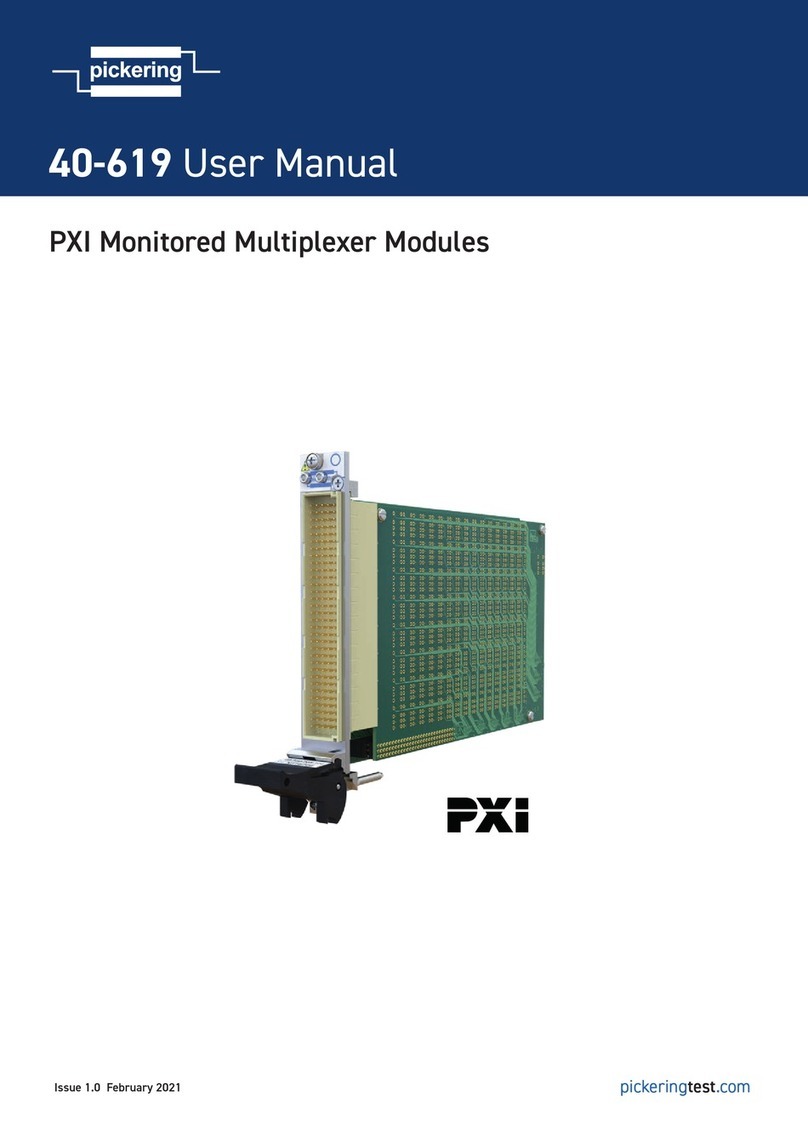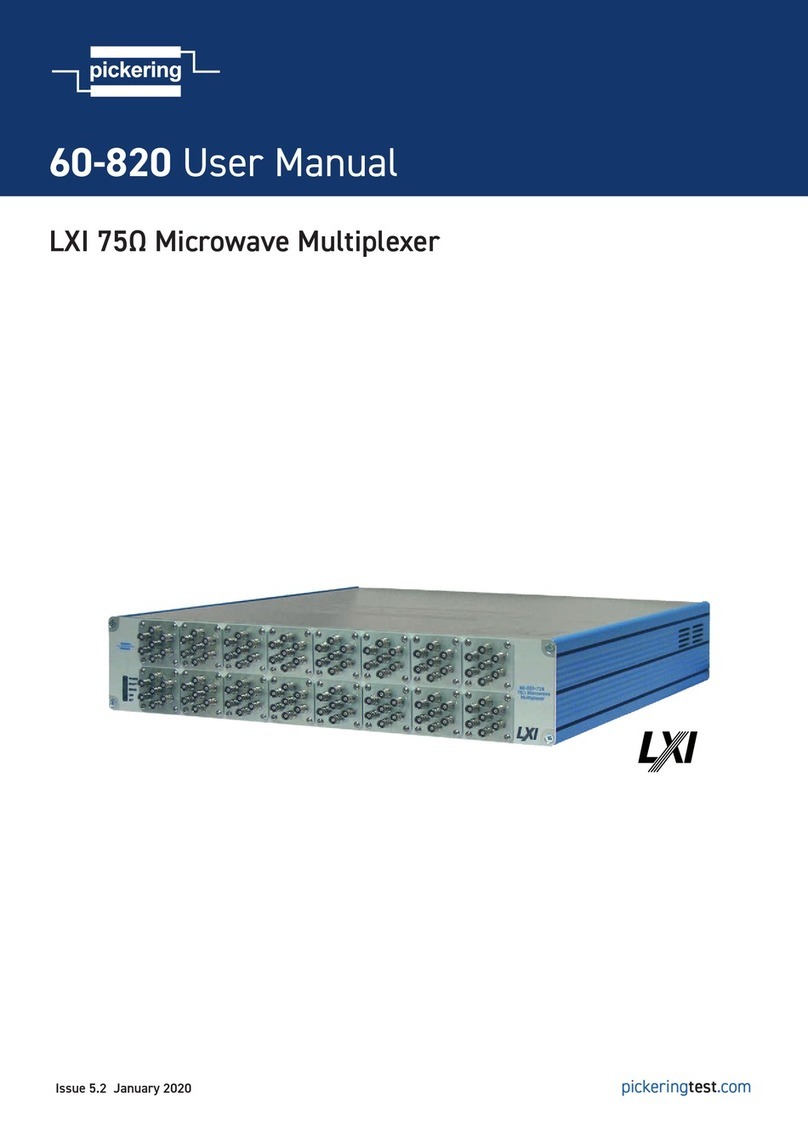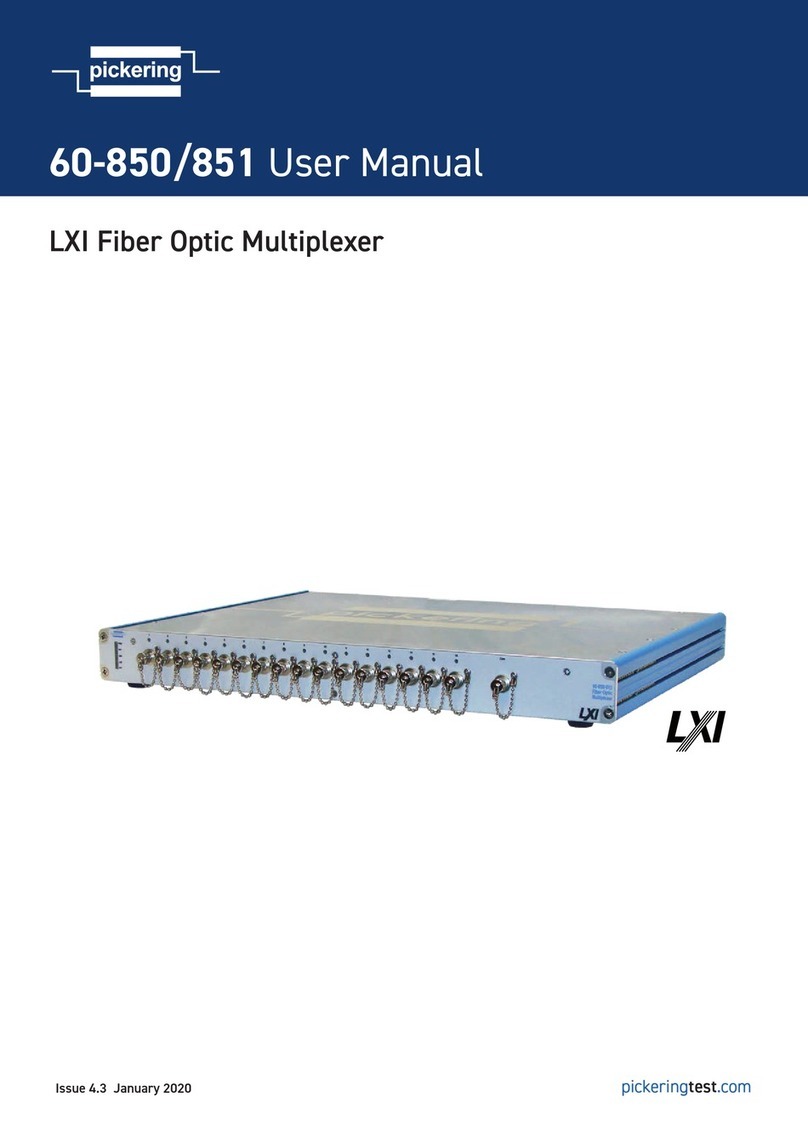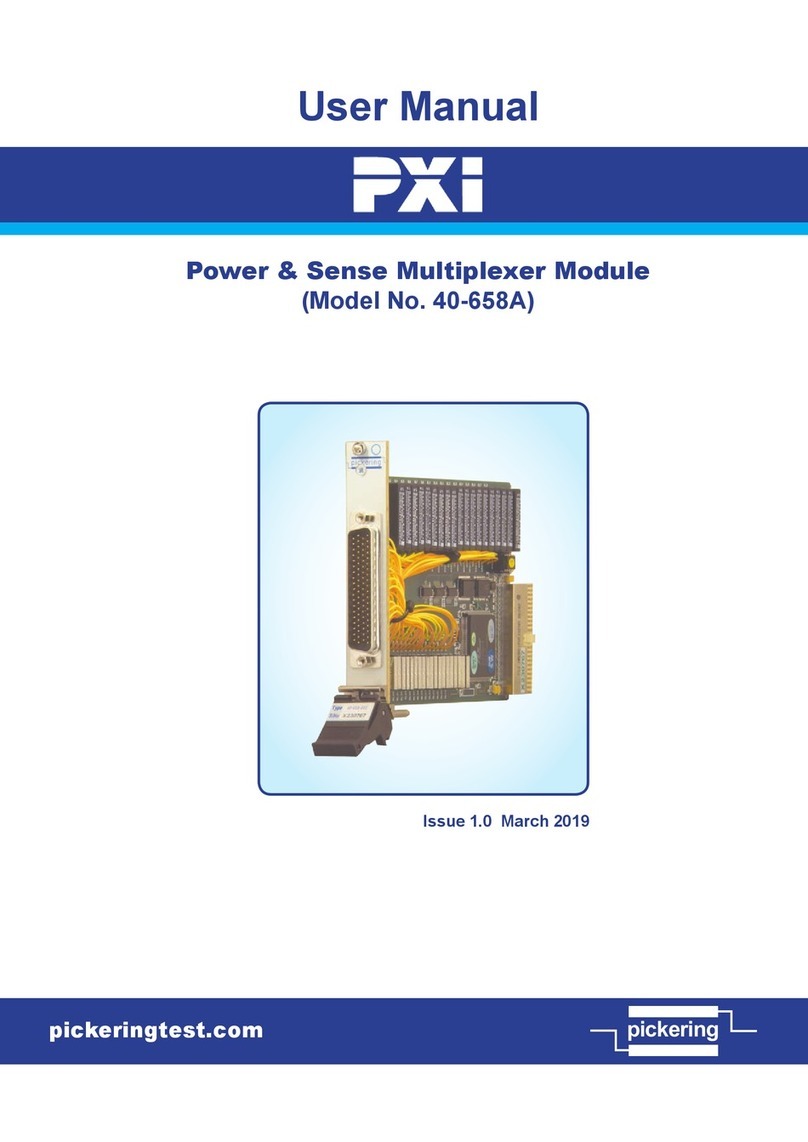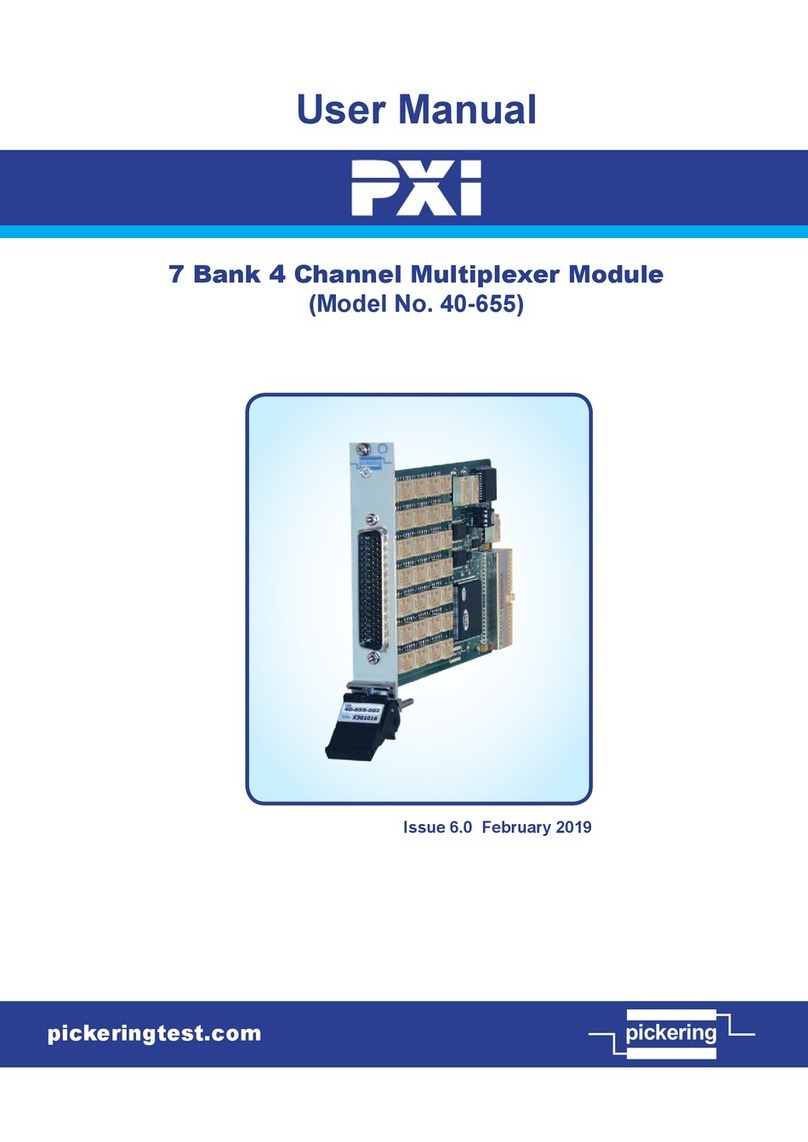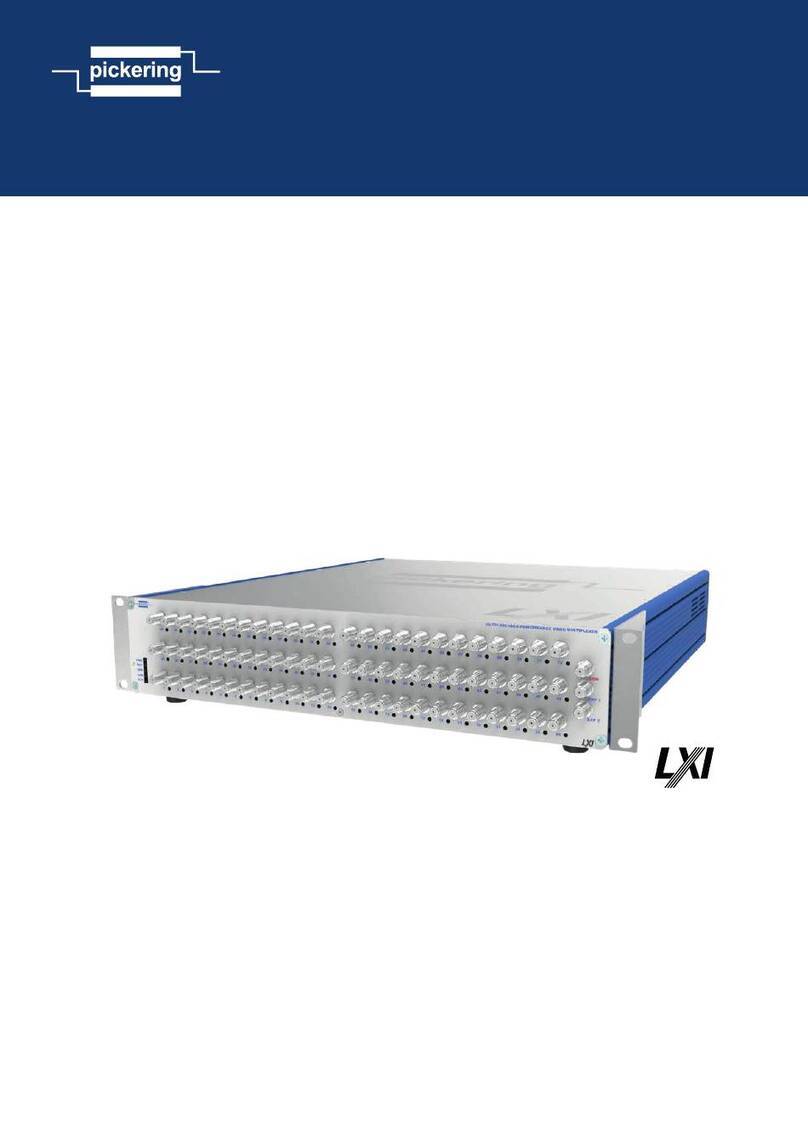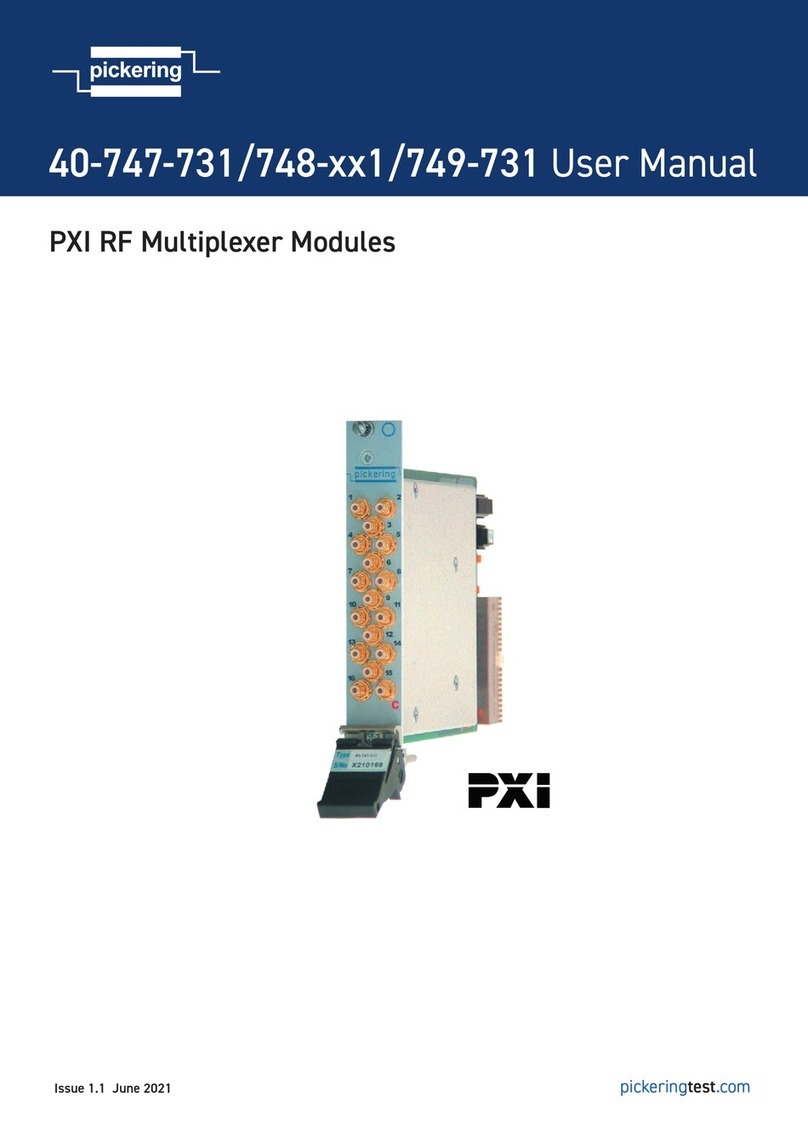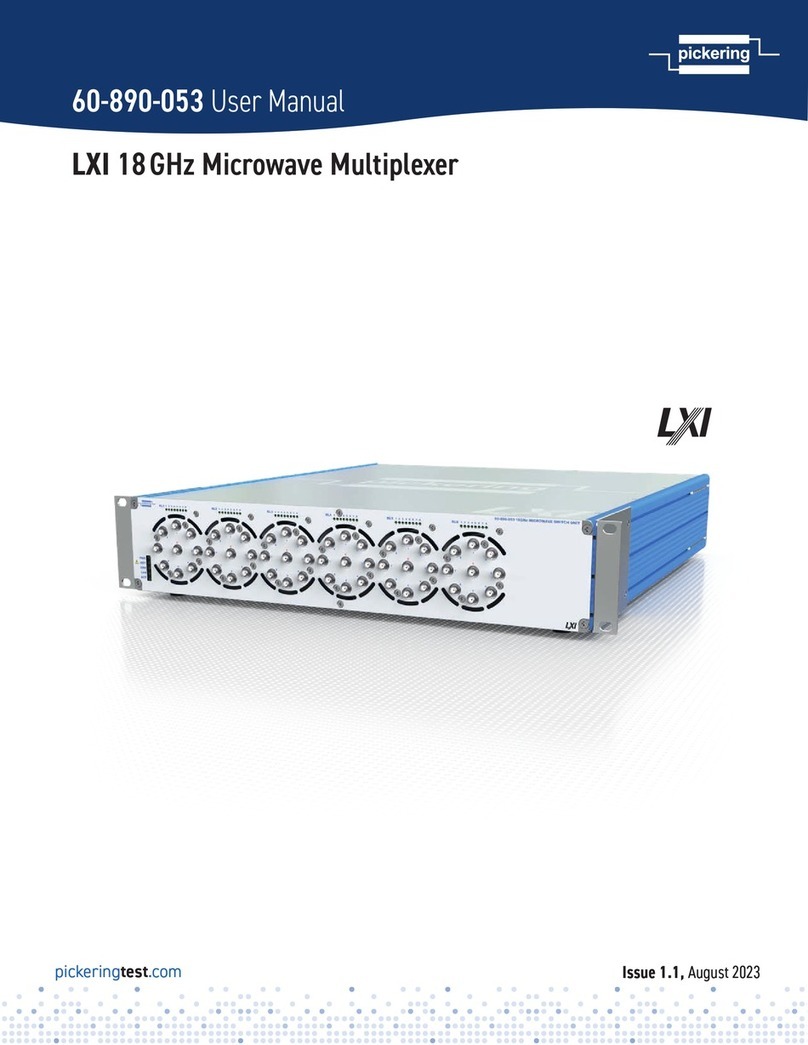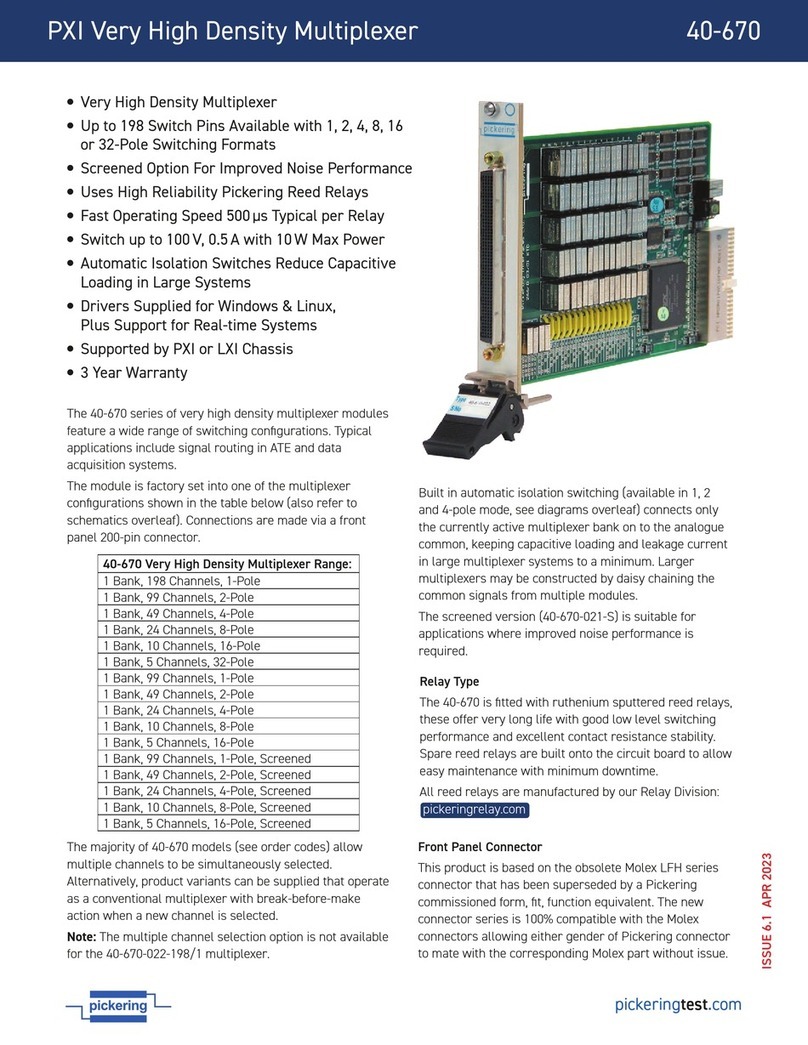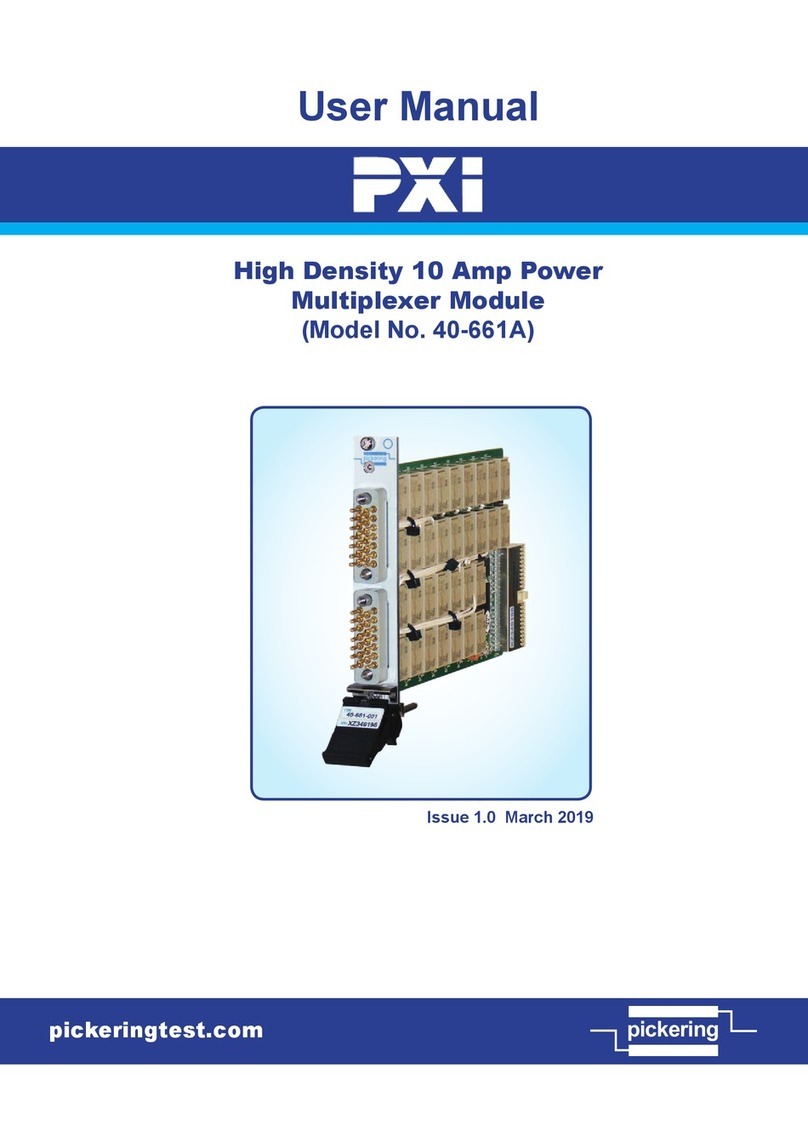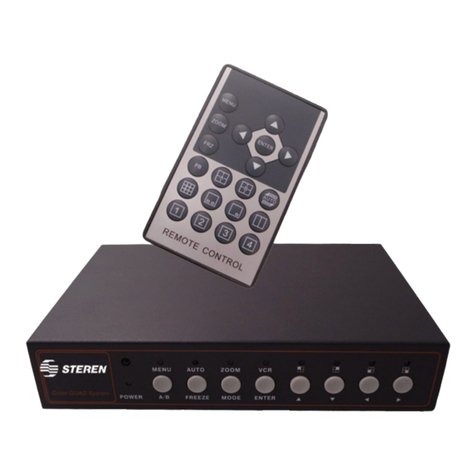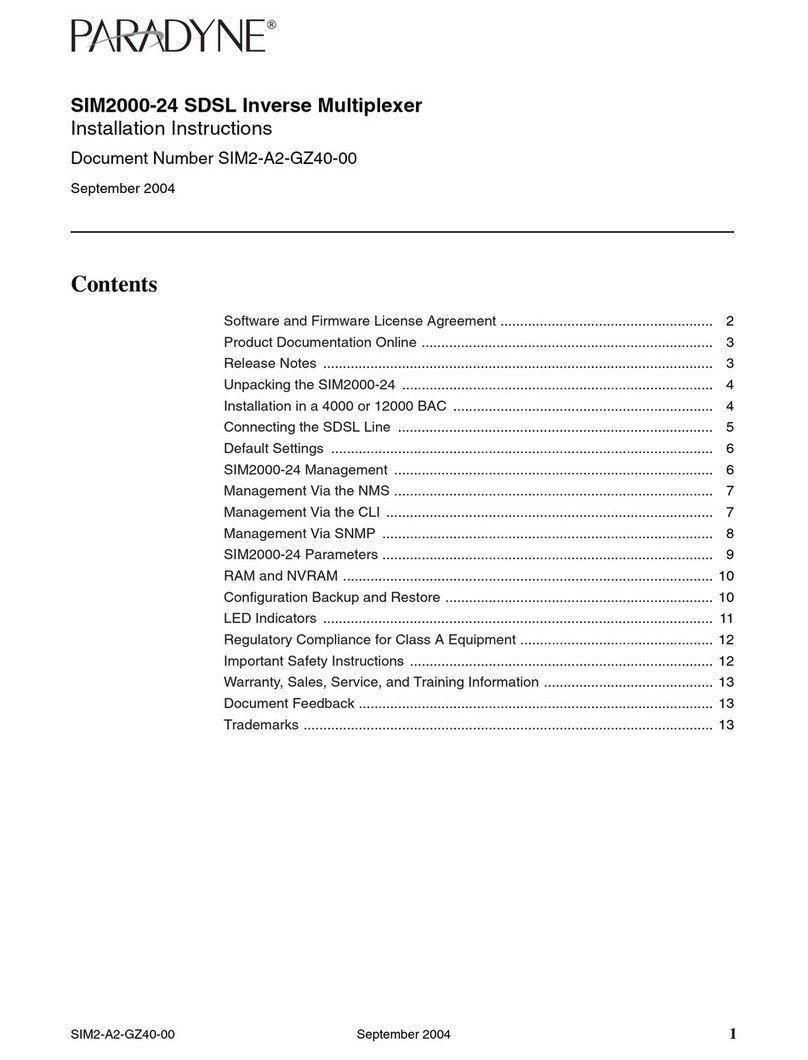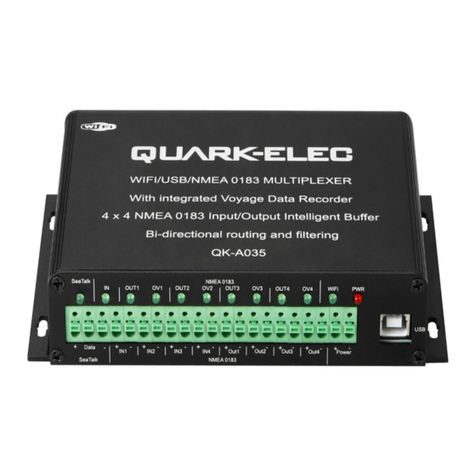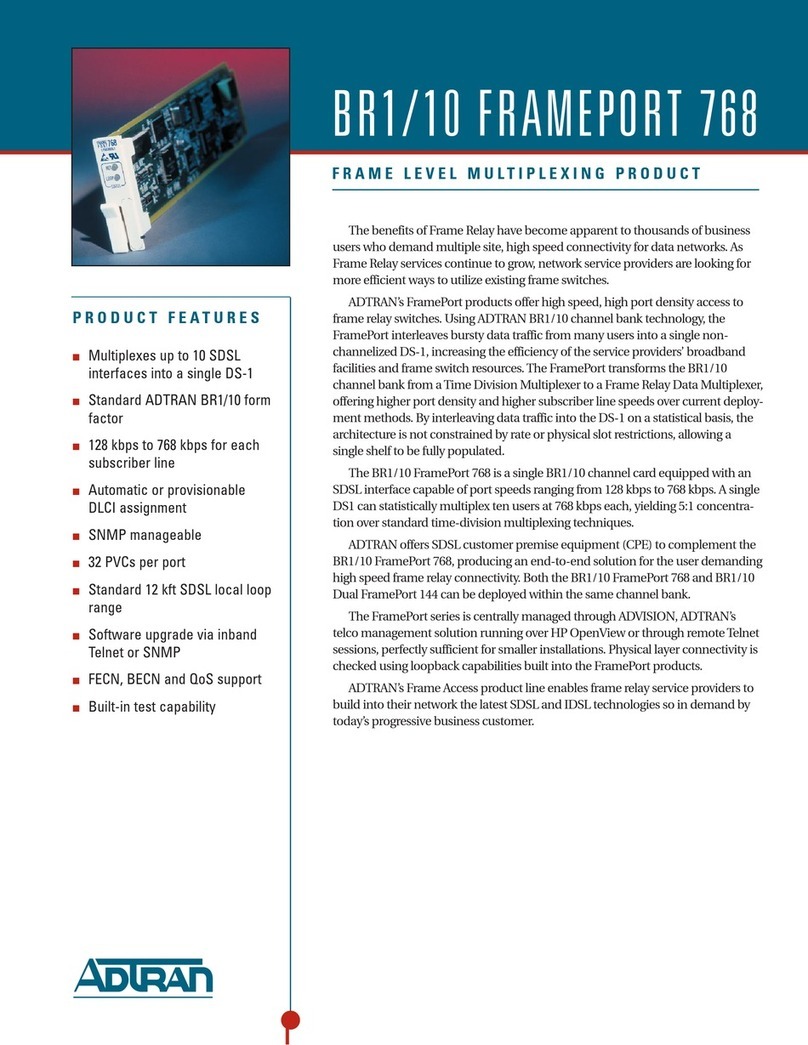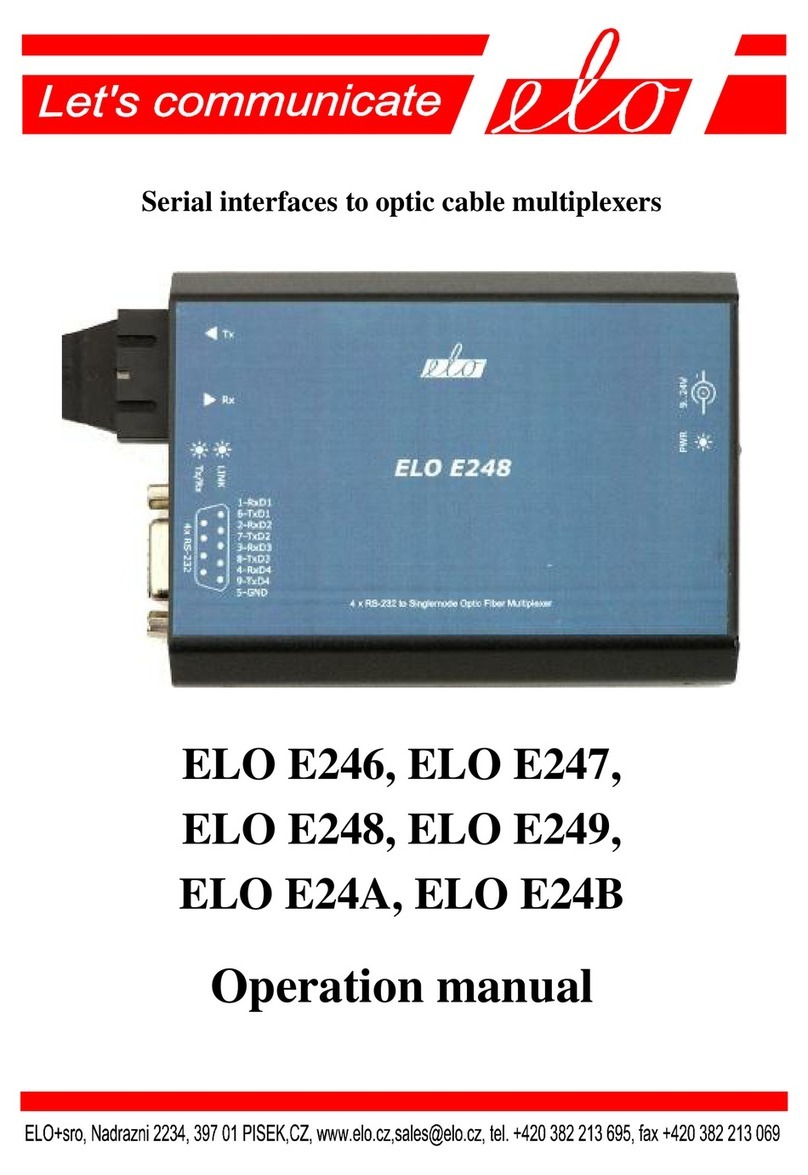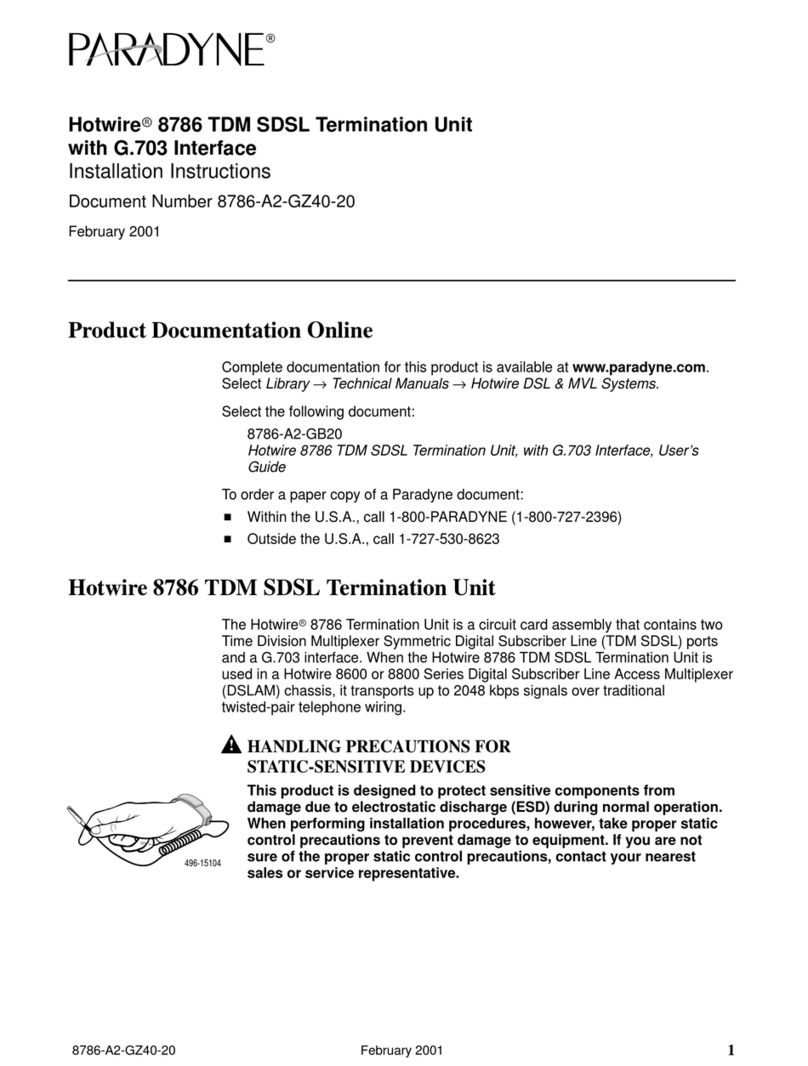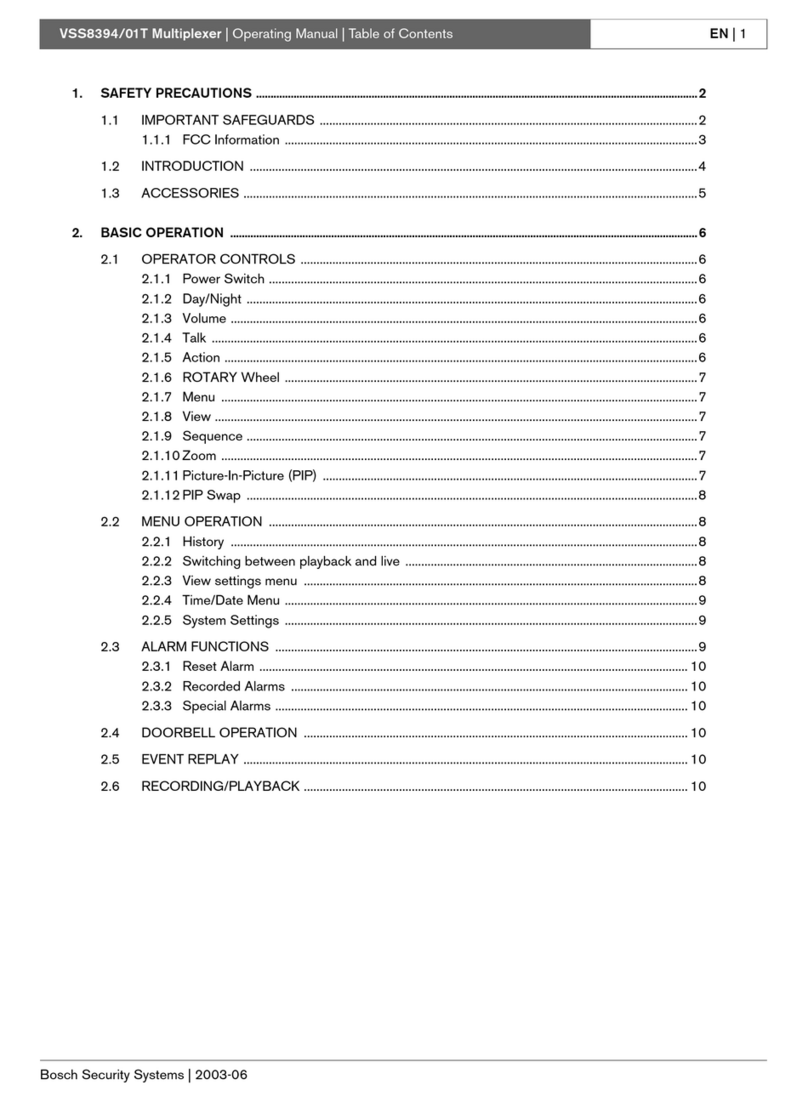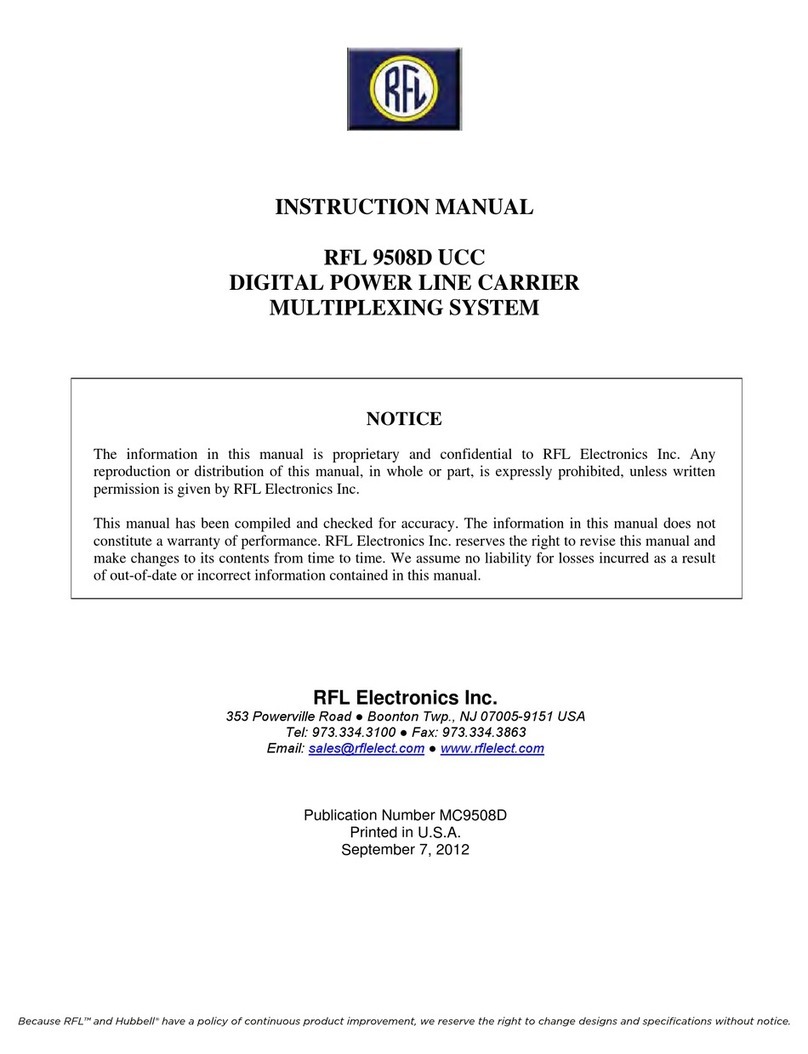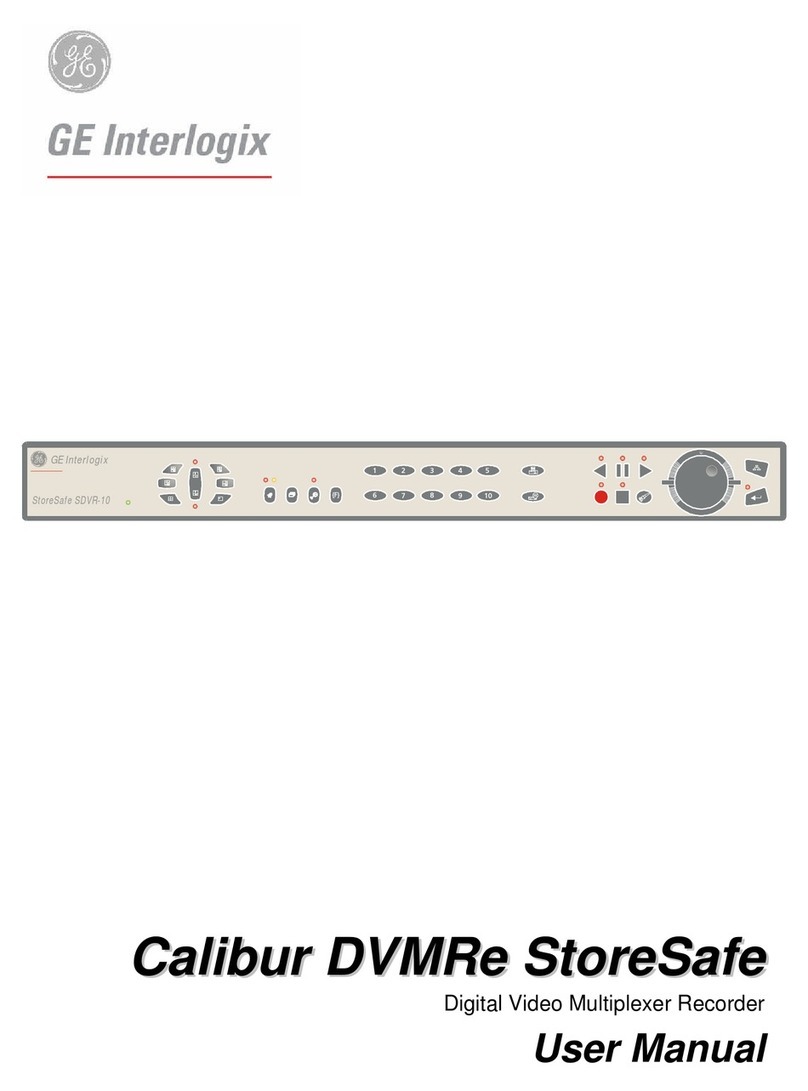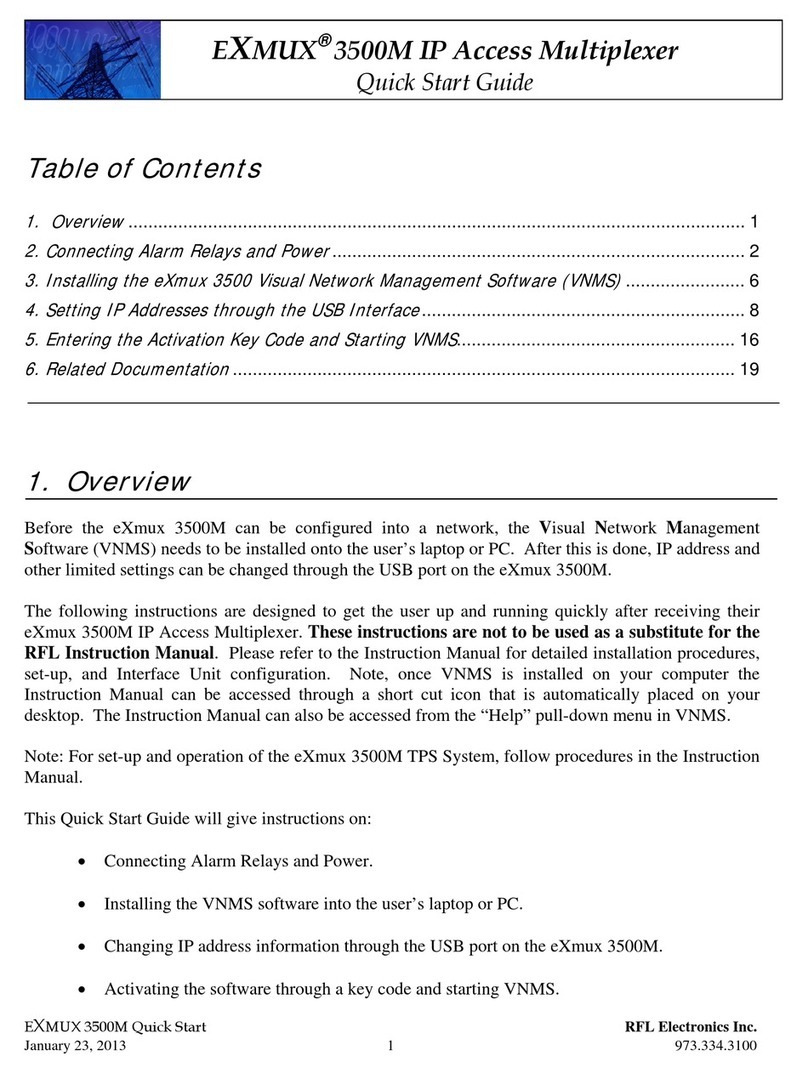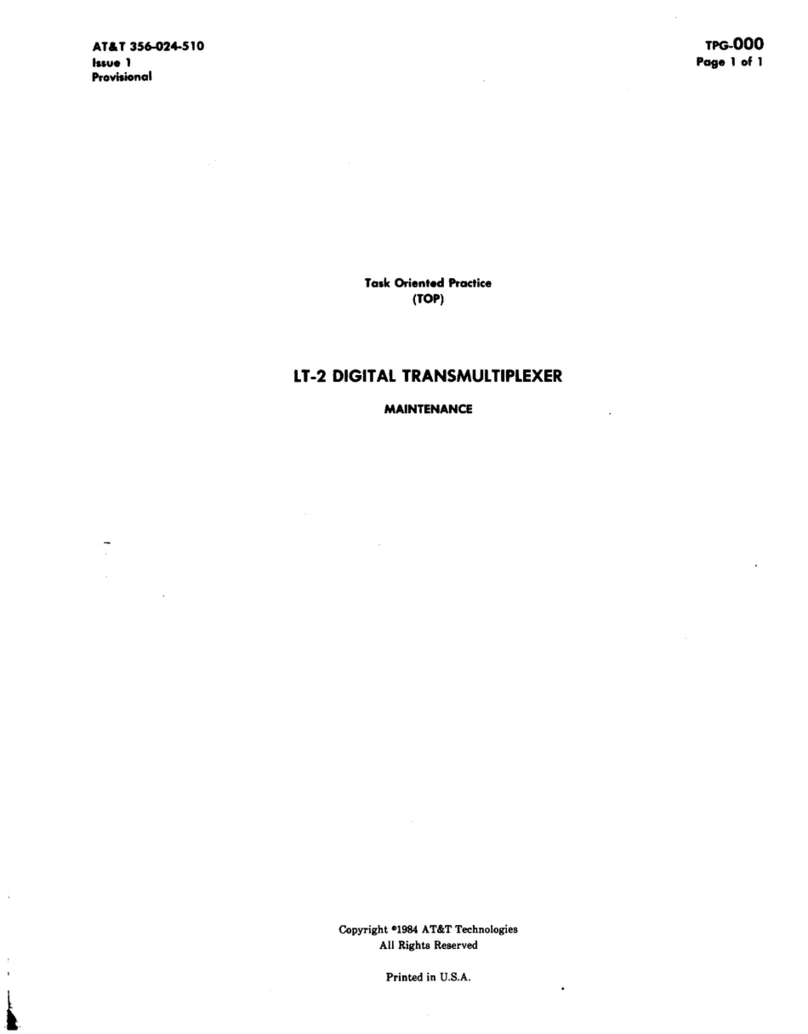
Page 1.2 HIGH VOLTAGE RELAY / MUX MODULE 40-320A
pickering
SECTION 1 - TECHNICAL SPECIFICATION
High Voltage Relay/MUX – 40-310/320
pickeringtest.com
Specifications
High Voltage Switching Specification
Switch Type: Rhodium Reed
Max Hot Switching Voltage:
Max Cold Switching Voltage:
750VDC/750VAC peak*
750VDC/750VAC peak working*
(1000VDC/1000VAC peak typical*)
Max Power:
Max Hot Switch Current:
Max Cold Switch Current:
10W
0.5A (13mA at max switch volts)
0.5A
Initial On Path Resistance:
Off Path Resistance:
Bandwidth:
<3Ω (single module)
>1x1010Ω(single module)
250kHz
Operate Time - 40-310:
Operate Time - 40-320:
500µs typical
1ms typical,
500µs for multichannel mode
Expected Life, low power:
Expected Life, full power:
>1x108operations
>5x106 operations
* For full voltage rating, signal sources to be switched must be fully
isolated from mains supply and safety earth.
Power Requirements
+3.3V +5V +12V -12V
0400mA (typ 280mA) 0 0
Operating/Storage Conditions
Operating Conditions
Operating Temperature:
Humidity:
Altitude:
0°C to +55°C
Up to 90% non-condensing
5000m
Storage and Transport Conditions
Storage Temperature:
Humidity:
Altitude:
-20°C to +75°C
Up to 90% non-condensing
15000m
PXI & CompactPCI Compliance
The module is compliant with the PXI Specication 2.2. Local Bus,
Trigger Bus and Star Trigger are not implemented.
Uses a 33MHz 32-bit backplane interface.
Safety & CE Compliance
All modules are fully CE compliant and meet applicable EU
directives: Low-voltage safety EN61010-1:2010, EMC Immunity
EN61326-1:2013, Emissions EN55011:2009+A1:2010.
Mechanical Characteristics
Single slot 3U PXI (CompactPCI card).
Module weight: 240g (40-310-101).
3D models for all versions in a variety of popular le formats are
available on request.
Connectors
PXI bus via 32-bit P1/J1 backplane connector.
Signals via front panel 37-pin male D-type high voltage connector,
for pin outs please refer to the operating manual.
Relay Type
The 40-310 and 40-320 are tted with high quality Rhodium relays
specically designed for very high voltage switching and are
manufactured by our sister company Pickering Electronics:
pickeringrelay.com
The design uses through hole leaded style relays to ensure easy
replacement with no special tools required. A spare relay is tted to
each module to enable easy servicing.
“Hot” Switching
This is when the load is switched with the high
voltage source applied. Hot switching may generate
considerable RFI, both within the switching module and on
interconnecting wiring. Care must be taken to suppress or
shield all cabling.
Note that any precaution which adds extra capacitance to
a cable should be taken with great care, even a very small
capacitance at high voltages can cause very large inrush
current through the module resulting in possible switch
weld and excessive RFI.
The 40-310/320 modules include extensive built-in RFI
suppression circuits that minimize RFI and surge problems.
“Cold” Switching – The Preferred Option for Reliability & Long Life.
With cold switching, the relay is operated before the high voltage
source is applied. In this case the maximum carry current is much
greater, also there will be much less stress on the reed relays, resulting
in improved reliability and life.
Most high voltage sources include a soft start facility which reduces the
likelihood of generating RFI or temporary over-voltage.
High voltage switching modules are often used for isolation testing
applications (e.g. cable, transformer or semiconductor isolation tests),
in these cases, cold switching is nearly always the preferred option to
reduce the risk of high voltage transients that may cause premature
breakdown.
Overview of “Hot” & “Cold” Switching Techniques
